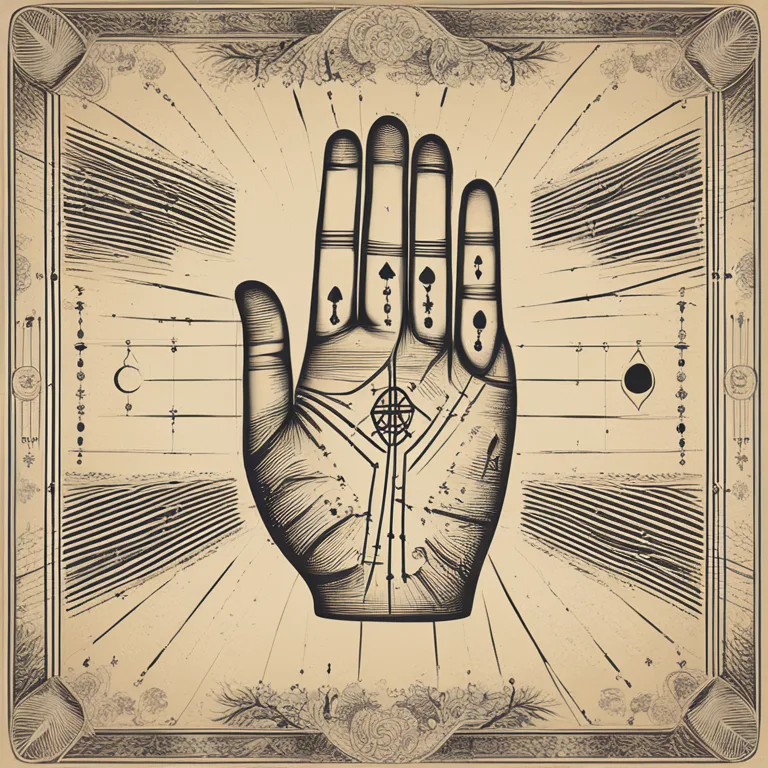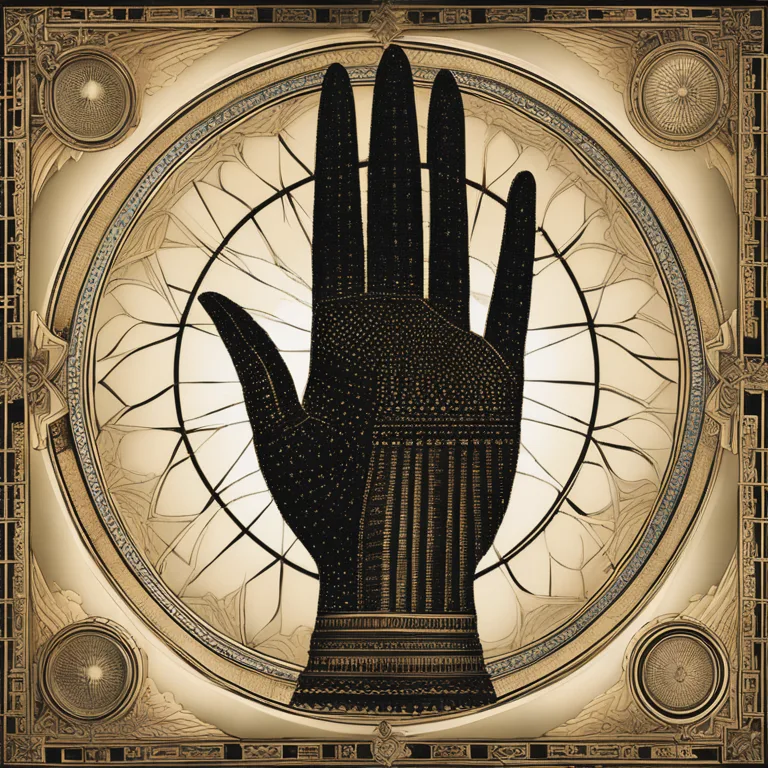
A Beginner's Guide to Palmistry
Discover the essentials of palm reading in this comprehensive guide, tailored for beginners keen on understanding the mysteries of palm lines and their meanings.
article by Nora Pennington
Palmistry Basics
Palmistry, the ancient art of reading hands, has been practiced for centuries across different cultures, offering insight into an individual's personality, life path, and future prospects. As we move into 2024, palmistry remains a subject of fascination for those seeking self-awareness or a glimpse of what's ahead. This guide goes beyond mere fortune-telling, delving into the art's roots and providing practical steps for beginners. With patience and practice, anyone can grasp the language written in the lines of their hands.

Understanding the Four Main Lines
Central to palmistry are the four main lines: the heart line, head line, life line, and fate line. Each line represents a different aspect of life, from emotions and intellect to lifespan and destiny. The heart line, arching around the top of the palm, suggests emotional stability, romantic perspectives, and cardiac health. The head line, just below, reveals mental attitudes, wisdom, and intellectual capacities. The life line, encircling the thumb base, indicates vitality and life length. Lastly, the fate line, although not present on all hands, shows the degree to which a person's life path is influenced by external factors.

The Minor Lines and Their Meanings
While the major lines hold great importance, the minor lines add depth to a palm reading. These include the marriage line, which predicts the nature of one's love life; the sun line, offering insights into fame and success; and the intuition line, hinting at psychic abilities. The appearance and clarity of these lines contribute to a more nuanced interpretation. Moreover, modern palmistry incorporates new findings, suggesting these lines can also reflect the impact of technology and societal shifts on individual experiences.

Markings and Mounts
Beyond lines, palms bear various markings — from crosses and stars to circles and grids — each with specific interpretations. Additionally, the mounts, or raised areas of the palm, relate to different celestial bodies like Venus, Mars, and Jupiter, echoing the principles of astrology. The prominence and development of these mounts offer insight into an individual's strengths, propensities, and potential challenges. In our current age, these interpretations might relate to digital aptitudes, social media influence, or how one navigates modern stressors.

The Shape of the Hand
The hand's shape, categorized into elemental forms such as earth, air, fire, and water, also plays a key role in readings. Earth hands are wide with square palms, fire hands are long with short fingers, air hands feature square or rectangular palms with long fingers, and water hands are long with oval-shaped palms. Each form associates with specific temperament qualities, which have adapted over time to include contemporary personality descriptors. Recognizing these shapes guides the reader in contextualizing the lines within a broader personality framework.
Current Trends in Palmistry
The interpretation of palm lines continues to evolve. Nowadays, with the influx of information technology and a greater focus on mental health, contemporary palmists may interpret the lines as indicators of digital fatigue or resilience to stress. As society progresses, palmists adapt their readings to the changing landscapes of life, integrating current wellness and psychological understandings into their practice, thus ensuring the relevance of palmistry well beyond 2024.
Published: 1/3/2024
Modified: 1/3/2024
More predictions
Come back here soon to learn more about yourself and your future


Exploring The Secrets of Palmistry
Delve into the ancient art of palmistry and discover how the lines on your hands can mirror the pathways of your life and fate.


The Essentials of Palmistry: A Guide for Newcomers
Embark on a journey through the basics of palmistry and learn the fundamentals of reading hands for personal insights.


The Art of Palmistry: Lifelines to Fate
Delve into the ancient practice of palmistry and discover how the lines on your palm can reveal insights about your personality, destiny, and love compatibility.